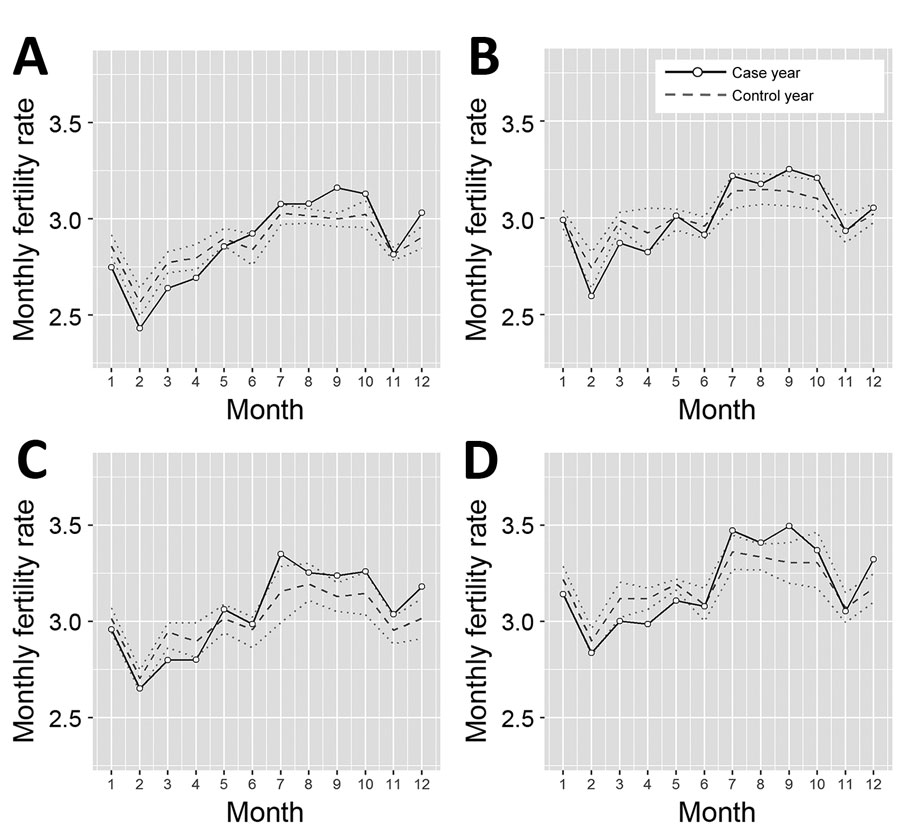Volume 26, Number 6—June 2020
Research
Temporary Fertility Decline after Large Rubella Outbreak, Japan
Figure 2

Figure 2. Temporal variation of fertility rates by prefecture in Japan, 2013–2017. A) Tokyo; B) Kanagawa; C) Osaka; and D) Hyogo. Solid line indicates average fertility rate during the case year, 2014. Dashed line indicates the average fertility rate during the combined control years, 2013, 2015, 2016, and 2017. Dotted lines indicate upper and lower limits of 95% CI for control years.
Page created: May 18, 2020
Page updated: May 18, 2020
Page reviewed: May 18, 2020
The conclusions, findings, and opinions expressed by authors contributing to this journal do not necessarily reflect the official position of the U.S. Department of Health and Human Services, the Public Health Service, the Centers for Disease Control and Prevention, or the authors' affiliated institutions. Use of trade names is for identification only and does not imply endorsement by any of the groups named above.